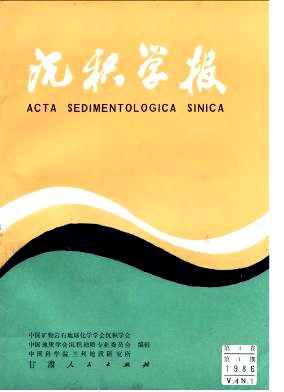DEPOSITIONAL MODEL OF DEEP WATER CARBONATE GRAVITY FLOWS IN THE MIDDLE-UPPER ORDOVICIAN SERIES IN FUPING, SHANXI PRVINCE
- Received Date: 1984-04-17
- Publish Date: 1986-03-10
Abstract: The Fuping area in Shaanxi lies on the Weibei uplift along the southern margin of the Eerdousi Basin. The Zhaolaoyu Formation of the Middle-Upper Ordovician series in this area is characterized chiefly by hemipelagic thin-bedded lime mudstones interbedded with limestone breccias and calca-renites derived from gravity flow, In addition, there is a small amount of tuff, radiolarian chert and well-sorted thin-bedded calcarenite and calcisi-ltite which represent the equivalent of contourite. Body fossils are poor, mainly pelagic ostracod, radiolaria and graptolite. Benthonic organisms are rare, but deep-water trace fossils of the Nereites facies are abundant. Gravity flow deposits of the Zhaolaoyu Formation can be subdivided into five rock types: ( 1 ) homogeneous wackstone; ( 2 ) thin-bedded graded calcarenite; ( 3 ) graded rubble calcarenite; ( 4 ) limestone breccia with oriented fabric; and ( 5 ) chaotic limestone breccia. In general, the thin-bedded graded calcarenite and homogeneous wack-stones form turbidite with divisions BCE or CE of the Bouma sequence while the graded rubble calcarenite and homogeneous wackstones form turid-ite with divisions AE of the Bouma sequence.Limestone breccia with oriented fabric exhibits normal or inverse-to-normal grading. Tabular clasts are frequently sub-parallel to the bedding or imbricated. The features suggest that they were deposited from a gravally high-density turbidity current. Chaotic limestone breccias might have been debris flow sediments. The above lithofacies commonly form two specific associated sequences in the section. From bottom to top, the two sequences go as follows: ( 1 ) chaotic limestone breccia-→graded rubble calcarenite-→homogeneous wack- stone; ( 2 ) ungraded limestone breccia with oriented fabric-→inverse-to- normal grading limestone breccia-→graded rubble calcarenite-→calarenite with devisions BC of the Bauma sequence-→homogeneous wackstone. These sequences indicate that they are successive deposits derived from individual flow. However, the distinct lithofacies in the above sequences were probably deposited through several sedimention surges. Based on integrated sedimentological, paleontological and tectonic setting analyses, we suggest that the Weibei region, together with North China, be a united shallow-platform prior to the later period of the Middle Ordovician. Then it was subsided and developed into a continental margin of the back-arc basin owing to the subduction of the Qinling plate beneath the North China plate. The Fuping area might have been a N-E trending deep sea front trough that stretched from this back-arc basin into the North China carbonate platform.The gravity flow sediments were mainly transported in great sheet flows along the axis of the trough basin. These flows were probably resulted from the confluence of several minor gravity flows around the downslope margin of platform. The model presented here differs from either the submarine fan model or the carbonate slope model, but it is similar to the pattern of modern carbonate debris sheets of the Exuma Sound in the Bahamas.
| Citation: | Mei Zhichao, Li Wenhou. DEPOSITIONAL MODEL OF DEEP WATER CARBONATE GRAVITY FLOWS IN THE MIDDLE-UPPER ORDOVICIAN SERIES IN FUPING, SHANXI PRVINCE[J]. Acta Sedimentologica Sinica, 1986, 4(1): 34-42. |






 DownLoad:
DownLoad: